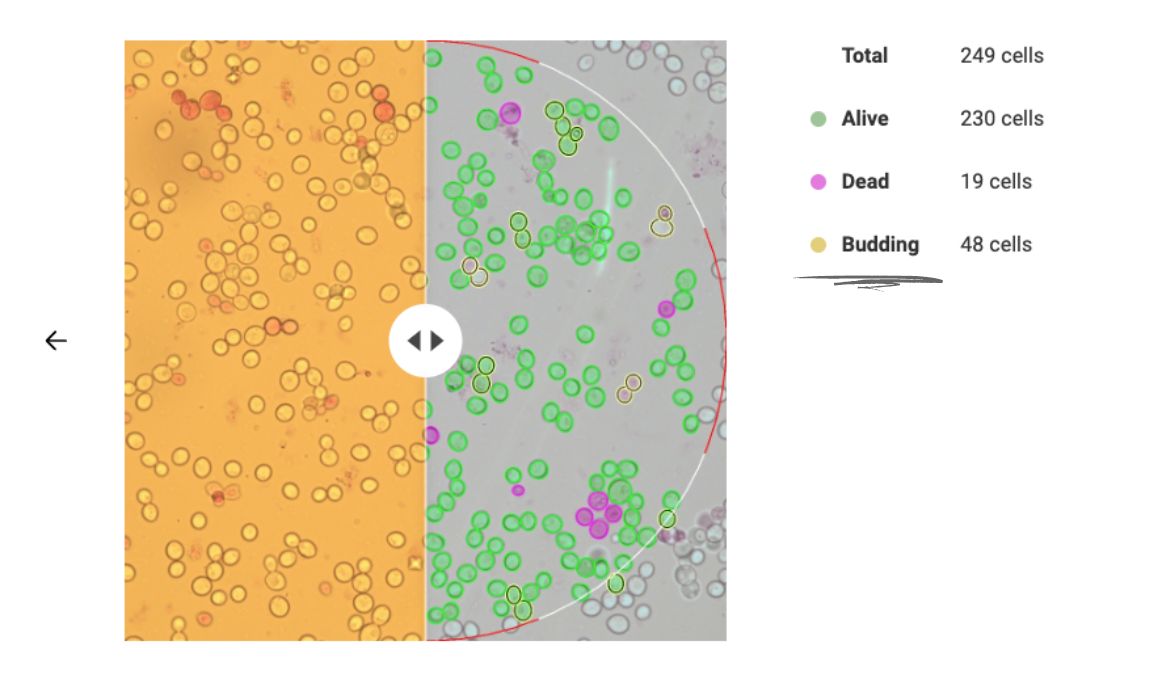Yeast Budding Index
So now you know what the budding index is. How can you use this data?
The budding index, typically expressed as a percentage, stands for the proportion of multiplying cells within the analyzed cell population, i.e., considering the total number of identified cells. So if, for instance, your budding index is 15, this means that 15% of the identified yeast cells were budding at the time you were doing the analysis.

As asexual reproduction, or budding, is the main means of reproduction in S. Cerevisiae, tracking the budding index basically means monitoring the yeast multiplication process along your fermentation. Why is this important? Because a healthy multiplication process is indicative of a healthy fermentation.
According to Tony Balzan (personal communication, December 5th, 2019) from yeast producer AB Biotek,
“The number of budding yeast cells can tell us a lot of what is happening during fermentation. Firstly, during the early stages of fermentation, a high budding percentage is indicative of good start yeast vitality and a healthy fermentation. Early on, we are expecting our cell sizes to be smaller as young daughter cells quickly initiate new cycles of replication. As fermentation progresses and environmental stresses increase (e.g. ethanol concentration and low pH) yeast energetic status deteriorates and the budding percentage will drop. By the end of fermentation, single cells become noticeably larger as yeast move into survival mode, while the budding cell percentage becomes very low.”
So probably the stage of fermentation during which the budding index is most relevant and useful is the lag phase.
The lag phase is the period of time between the moment you’ve pitched the yeast and the moment the fermentation has started. Once inoculated into the wort, the yeast requires a bit of time to adjust and to go from dormancy to active fermentation. This typically happens within 12 hours, although it can be as short as 1 hour or it can even take up to 24 hours. The budding index at this point is a good indication of how your fermentation is going, whether you’ve pitched enough yeast and/or whether your wort is properly oxygenated, it has the right temperature (a wort that’s too cold can impede the lag phase) and contains the necessary nutrients for yeast to move into the exponential growth phase.
Because it depends on so many factors, such as the yeast strain, the fermentation stage, the time from the inoculation, etc., there are no reference values for the budding index. However, once you’ve monitored the fermentation of a type of beer you’re producing and you’ve established a baseline for successful fermentation, you’ll know exactly what to expect from your next batches and what the budding index should be at various stages in the fermentation process.